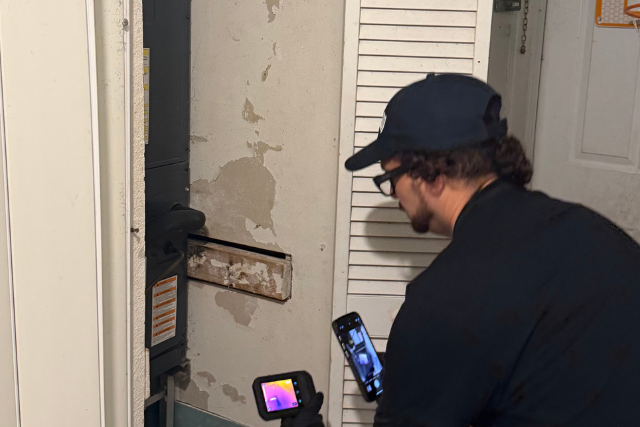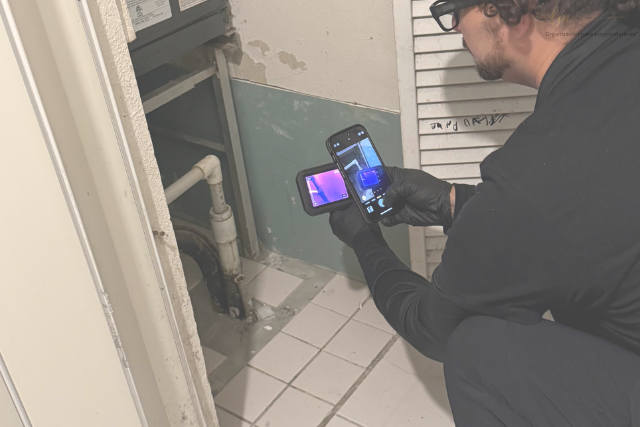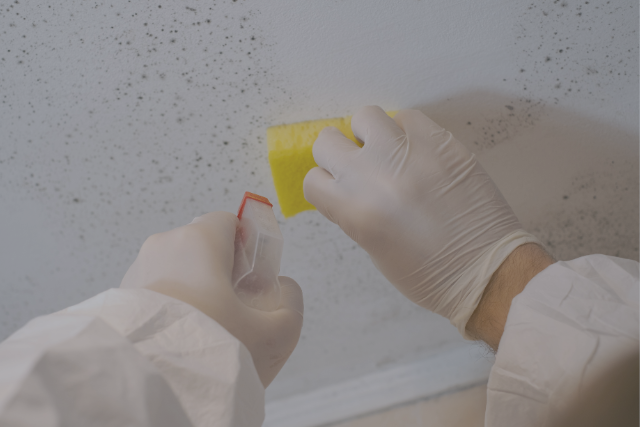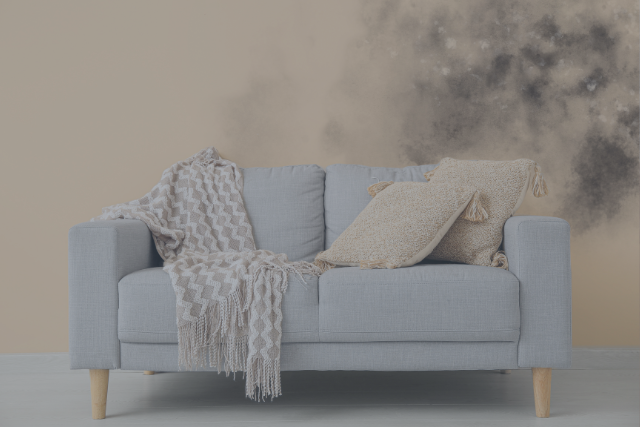Mold isn’t just an eyesore — it’s a warning sign that something’s wrong inside your home. Whether it’s moisture buildup, poor ventilation, or hidden leaks, mold thrives in conditions that many homes unknowingly create.
If you’ve noticed dark stains on walls, persistent musty smells, or unexplained allergy symptoms, it’s time to investigate. This guide breaks down what causes mold, how to spot it early, and what steps to take to handle it the right way.
What Causes Mold in Homes?
Persistent Moisture
Moisture is the number one trigger for mold growth. It can come from leaks, floods, high humidity, or condensation. Bathrooms, basements, and poorly sealed windows are common hotspots.
Poor Ventilation
Rooms with little airflow — like closets, laundry rooms, and sealed bathrooms — trap moisture and provide the perfect environment for mold to thrive.
Porous Materials
Materials like wood, drywall, carpet, and cardboard absorb moisture. Once mold takes hold, it can spread inside these surfaces where you can’t see it.
Hidden Structural Damage
Cracks, roof leaks, or poorly installed windows can allow moisture to enter silently, creating hidden colonies of mold behind walls or under floors.

Warning Signs You May Have Mold at Home
- Black, green, or gray spots on walls or ceilings
- Persistent musty odor
- Allergy symptoms like sneezing, congestion, or watery eyes without an obvious cause
- Condensation on windows or walls
- Peeling paint or warped materials
👉 Mold is often invisible to the naked eye and can grow silently behind walls, inside HVAC systems, or under carpets. That’s why professional inspection is so important.
What to Do If You Suspect mold in homes
Don’t Use Bleach Without Knowing the Source
Bleach only addresses surface stains — it doesn’t kill mold inside porous materials. Using bleach without identifying the root of the problem can make things worse and release more spores into the air.
Don’t Ventilate Without Filtration
Opening windows or turning on fans might feel like the right thing to do, but it can spread invisible mold spores throughout your home. Unfiltered airflow can turn a small mold issue into a house-wide problem.
Schedule a Professional Mold Inspection
A certified inspection helps determine the extent of the issue and whether hidden mold is present. Professionals use tools like infrared cameras, moisture meters, and lab testing to get accurate results.
Get Lab Testing When Needed
Advanced inspections include air or surface samples analyzed by certified labs. These tests identify the type of mold, whether it’s active, and how dangerous it might be — helping you decide the right next steps with confidence.
Why You Should Never Ignore Mold
- It can worsen asthma, allergies, and respiratory issues
- It weakens your home’s structure over time
- It may void your insurance claims if not addressed promptly
- It lowers your property value
- It can become a legal issue in rental properties
How to Prevent Mold at Home
Use Dehumidifiers
Dehumidifiers help maintain balanced indoor humidity levels — ideally between 30% and 50%. Use them in moisture-prone areas like bathrooms, kitchens, closets, and basements. Especially in places like Florida, where humidity is naturally high, these devices are essential year-round. Smart dehumidifiers with auto sensors can even turn on automatically when moisture spikes.
Improve Ventilation
Proper airflow is key to reducing condensation. Install exhaust fans in bathrooms and kitchens, open windows during dry weather, and check that your HVAC system isn’t clogged or recycling humid air. Ceiling fans and air exchangers can also help regulate air circulation and prevent moisture pockets.
Fix Leaks Immediately
Don’t wait for a stain to appear. Even small leaks under sinks or behind walls can trigger mold growth within 24–48 hours. Inspect plumbing regularly, especially in laundry areas and under the kitchen sink. A small drip today can become a costly remediation tomorrow.
Don’t Paint Over mold in homes
Painting over mold in homes only traps the problem. You might mask stains temporarily, but the spores remain active underneath — and they’ll return stronger. Always investigate and resolve the root cause before applying new finishes. If you’re selling your home, this can also avoid inspection failures or legal trouble.
Use HEPA Air Purifiers
High-Efficiency Particulate Air (HEPA) filters trap airborne mold spores and other allergens, improving overall indoor air quality. Place them in bedrooms, living areas, or anywhere moisture is hard to control. Choose models rated for the square footage of each room for maximum effectiveness.
When to Call a Mold Professional
- You smell mold but don’t see it
- The affected area is larger than 10 square feet
- You or someone in the home has a compromised immune system
- You need a report for insurance or legal reasons
- You’ve cleaned it before, but it keeps coming back
Still have questions about mold in your home? Learn more by exploring our guide on the Types of Mold Found in Homes, understand the early warning signs of mold, or find out when it’s worth getting a professional mold inspection.
For additional resources, visit the CDC’s official mold hub to understand how mold affects indoor environments and health.
Book your free inspection with SpotMold today
Suspect mold in your home? Don’t guess — get clarity.
We serve all of Florida with certified professionals and lab-backed analysis.



